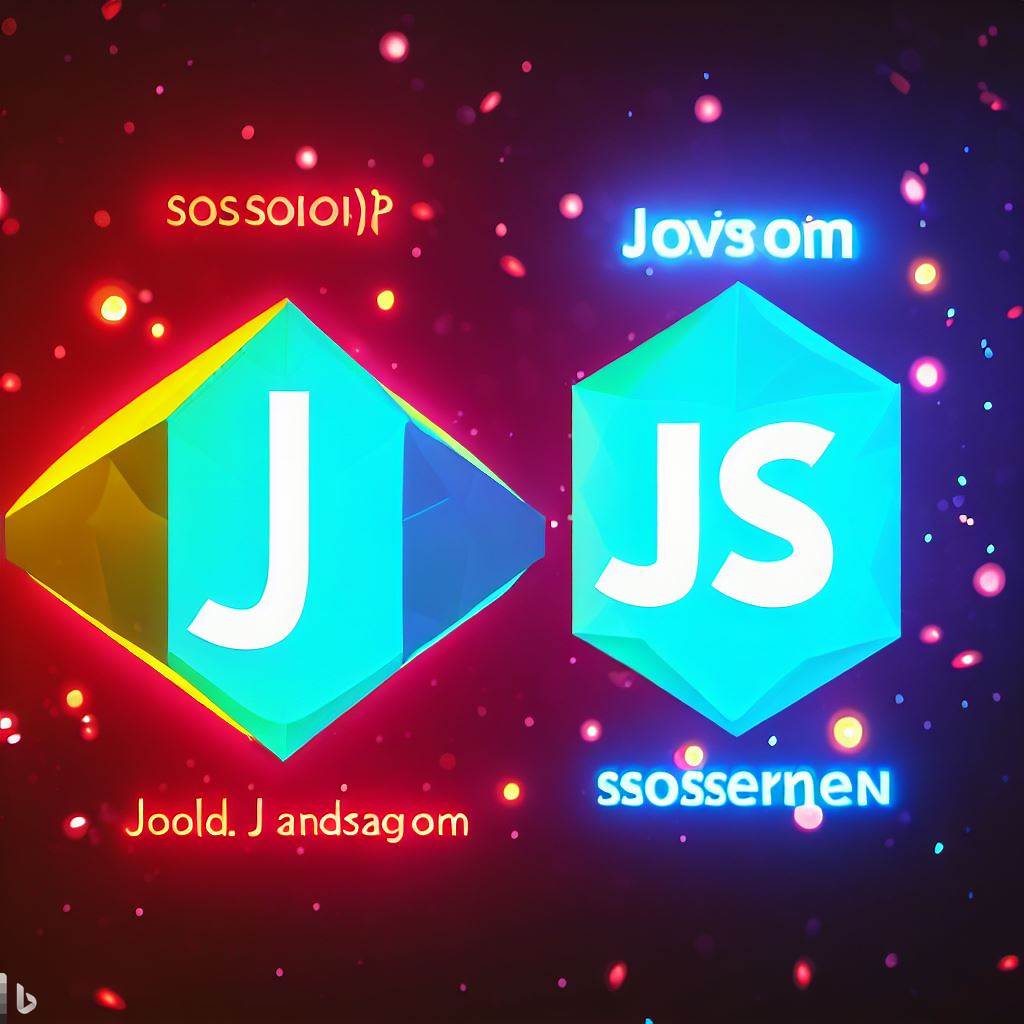The Battle of Formats: JavaScript Objects vs. JSON vs. BSON
 Manuj Jain
Manuj Jain
As a web developer, you have probably encountered JavaScript objects, JSON, and BSON in your projects. These are all data interchange formats used for transmitting data between client and server, or between different systems. In this article, we'll take a closer look at these formats, and highlight the key differences between them.
JavaScript Objects
JavaScript objects are the most basic of the three formats, as they are a native data type in JavaScript. Objects are used to store collections of data in key-value pairs, where each key is a string and each value can be any JavaScript data type, including objects themselves. Here's an example of how to create an object in JavaScript:
let myObject = { name: "John", age: 30, city: "New York" };
You can access properties of an object using either dot notation or bracket notation. For example, to access the "name" property in the above object, you can use:
console.log(myObject.name); // Output: "John"
One limitation of JavaScript objects as a data interchange format is that they cannot be easily transmitted over a network. They need to be converted into a string format that can be transmitted and then converted back to an object format on the receiving end.
JSON
JSON (JavaScript Object Notation) is a lightweight data-interchange format that is easy for humans to read and write, and easy for machines to parse and generate. JSON is derived from the JavaScript object syntax, but it is a text format that is completely language-independent. Here's an example of a JSON object:
{
"name": "John",
"age": 30,
"city": "New York"
}
Note that JSON objects use double quotes around keys and values, whereas JavaScript objects use single quotes around keys and values (or no quotes at all for keys that are valid identifiers).
JSON objects can be easily converted to and from JavaScript objects using the built-in JSON.stringify() and JSON.parse() methods. For example, to convert the above JavaScript object into a JSON string:
let myObject = { name: "John", age: 30, city: "New York" };
let jsonString = JSON.stringify(myObject);
console.log(jsonString);
// Output: {"name":"John","age":30,"city":"New York"}'
Similarly, to convert a JSON string into a JavaScript object:
let jsonString = '{"name":"John","age":30,"city":"New York"}';
let myObject = JSON.parse(jsonString);
console.log(myObject.name); // Output: "John"
One limitation of JSON is that it cannot handle binary data, such as images or audio files.
BSON
BSON (Binary JSON) is a binary-encoded serialization of JSON-like documents. BSON is designed to be efficient in storage and transmission and is used in many MongoDB implementations. BSON is similar to JSON in terms of its data types and structure, but it includes additional data types for handling binary data, timestamps, and other data types that are not present in JSON. Here's an example of a BSON object:
{
"name": "John",
"age": NumberInt(30),
"city": "New York",
"profilePic": new Binary(Buffer.from("..."))
}
Note that BSON objects use a variety of data types, including NumberInt, Binary, and others that are not present in JSON.
BSON objects can be converted to and from JavaScript objects using third-party libraries, such as bson for Node.js. For example, to convert the above BSON object into a JavaScript object, you could use the following code:
const bson = require('bson');
const bsonObject = { name: 'John', age: bson.Int32(30), city: 'New York', profilePic: bson.Binary(Buffer.from('...')) };
const jsObject = bson.deserialize(bson.serialize(bsonObject));
In summary, BSON is a binary-encoded serialization format used in MongoDB implementations. It is similar to JSON in terms of its structure and data types, but includes additional data types for handling binary data and other types that are not present in JSON. While BSON can be converted to and from JavaScript objects using third-party libraries, its primary use case is for efficient storage and transmission of data in MongoDB.
Conclusion
In conclusion, JavaScript objects, JSON, and BSON all serve as data interchange formats, but they differ in their structure and intended use cases. JavaScript objects are native data structures in JavaScript, used for representing data within the language. JSON is a text-based format that is widely used for exchanging data between different programming languages and systems. BSON, on the other hand, is a binary-encoded serialization format that is optimized for storage and transmission in MongoDB databases.
While JavaScript objects and JSON share many similarities in terms of structure and data types, BSON includes additional data types that are not present in JSON, such as Binary and Timestamp. BSON is also more compact and efficient than JSON, making it a better choice for storing and transmitting large amounts of data.
JavaScript Objects | BSON | BSON | |
|---|---|---|---|
Structure | Native data structures in JavaScript | Text-based format | Binary-encoded format |
Data Types | Supports JavaScript data types, including functions | Supports basic data types such as strings, numbers, and booleans | Supports basic data types as well as additional types such as Binary and Timestamp |
Human-Readable | Yes | Yes | Yes |
Efficiency | Less efficient for storage and transmission compared to JSON and BSON | Efficient for transmission and storage | More efficient than JSON due to binary encoding |
Usage | Used for representing data within JavaScript | Used for exchanging data between different systems | Used for efficient storage and transmission in MongoDB databases |
Overall, understanding the differences and similarities between JavaScript objects, JSON, and BSON is important for developers who work with data interchange formats, particularly in the context of web development and MongoDB databases. By leveraging the strengths of each format, developers can create more efficient and effective applications that meet the needs of their users.
Subscribe to my newsletter
Read articles from Manuj Jain directly inside your inbox. Subscribe to the newsletter, and don't miss out.
Written by

Manuj Jain
Manuj Jain
Technology, politics, and history: often, I find myself drawn to the intersection of these fields. When I am not writing or coding, I spend my time staying up-to-date on the latest developments in the tech industry, reading about political and historical events, and exploring new ideas and perspectives. I am always looking for new and exciting opportunities to learn and grow as a writer and developer.